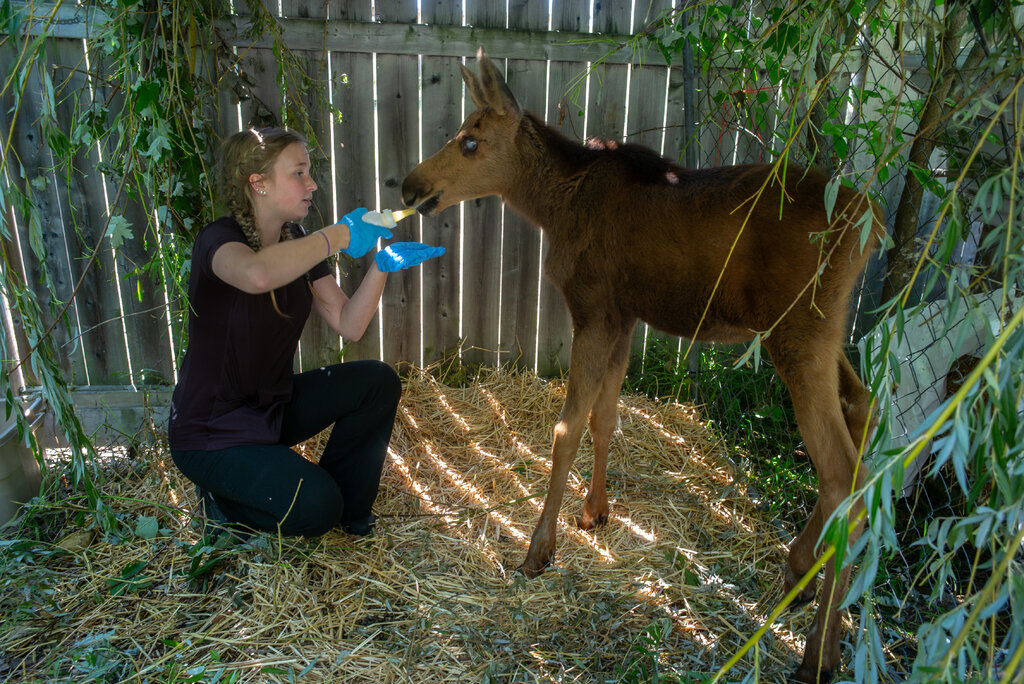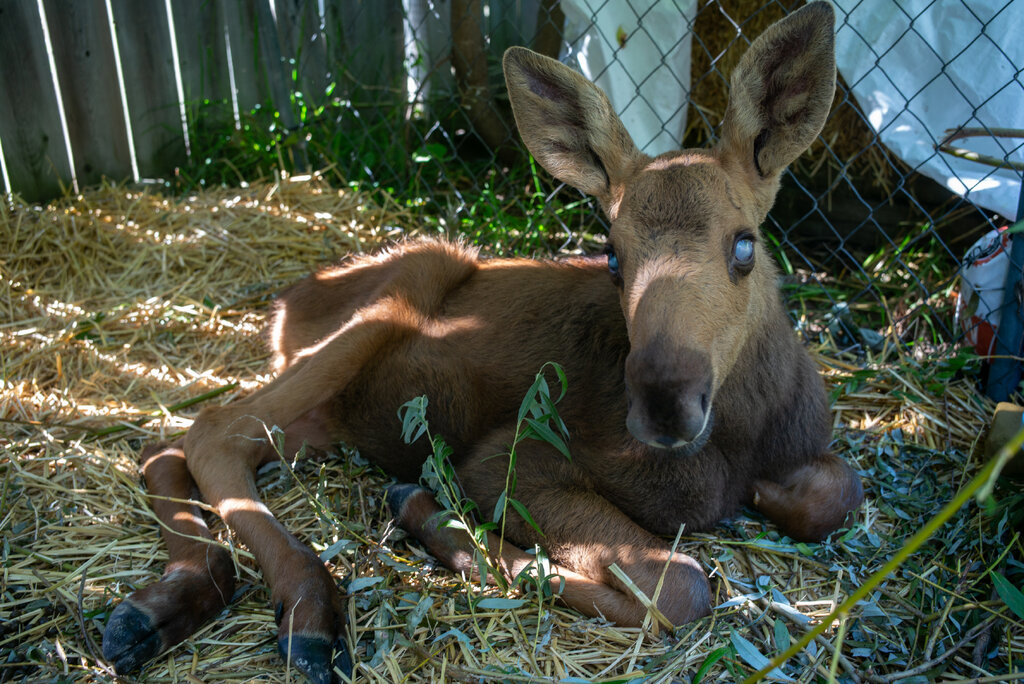On Friday at Holly’s Haven, a wildlife rescue and rehabilitation center in a rural section of Ottawa, there was one coyote, two porcupines and more young raccoons and skunks than I could easily count. And in a makeshift habitat at the very back, there was a much larger animal: a blind moose with an injured leg that is about a month and a half old.
The arrival of Cedar, as the moose is known, has meant that Lynne Rowe, the center’s founder and director of operations, has had to learn a lot about the needs of young moose very quickly. But it has also created a particular challenge. Like all rescue centers, Holly’s Haven normally returns animals to the wild when they are old enough to cope or when they have recovered from their injuries. The best prognosis for Cedar is that he will recover very limited vision in his right eye, making a return to the wild a death sentence. But Cedar cannot follow the path set by Holly, a raccoon for whom the center is named and who lived there for years because brain damage made her release impossible. While Cedar weighs about 30 kilograms, or more than 65 pounds, he could reach 700 kilograms, or 1,500 pounds, as an adult. “All the experts I’ve consulted, veterinarians and moose rehabilitators, confirmed that he is not releasable,” Rowe told me as Cedar contentedly munched on dangling willow branches. “Young moose are heavily predated in the wild by coyotes, wolves. So he’d be extremely vulnerable.” (I recently wrote about the dangers moose and motorists face on Newfoundland’s highways, where North America’s tallest and second-largest land animal is an invasive species that has prospered.) On July 7, Rob Boisvert, a co-founder of a group called 269 Animal Rescue, was called by a friend who had spotted an injured young moose in a field east of Ottawa near the Quebec-Ontario border. When he arrived, Mr. Boisvert told CBC Radio, he began looking for the calf’s parent. “I don’t want to be the one that gets in between a mom moose and her and her son,” he told the broadcaster. But it soon became apparent, he said, that the calf was on its own. Because Mr. Boisvert does not hold a “wildlife custodian” license from the Ontario government, he contacted Rowe, who remotely supervised the move to the center next to their house, which sits on 10 acres of land. An enclosure was made largely out of steel fencing panels usually used for construction. And a large plastic wading pool became a substitute for the wetlands where moose spend much of their time. But before Cedar moved in, he was placed in an office with straw spread on the floor where Ava Potten, a student working for the center this summer, comforted him. “He was definitely stressed out,” Ms. Potten, who is now in charge of bottle-feeding Cedar, said. “But he fell asleep on me.”
The large infection on Cedar’s right hind leg appears to be responding to antibiotics. Rowe and Ms. Potten excitedly noted on Friday that Cedar was applying his full weight on it. An ophthalmic veterinarian told Rowe that there was no hope that sight would return to Cedar’s left eye, which is completely clouded over. But there is a chance that the moose may regain partial vision in his other eye. The cause of the injuries remains unknown, although Rowe said that all of the veterinarians agreed that Cedar had suffered some sort of trauma to his eyes and leg. Rowe now has a plan for Cedar. The Toronto Zoo, Canada’s largest, has a large moose enclosure but no moose. The last pair died, effectively from old age, earlier this year. But when it comes to animals found in Canada that are not in an endangered species recovery program, the zoo now exhibits only animals that, like Cedar, cannot live in the wild or were born at the zoo. |
Saturday, July 19, 2025
A Rescue Center for Small Wild Animals Looks to Place a Blind Moose Calf
Subscribe to:
Post Comments (Atom)
So you think Canada's current cold snap means "global warming" is over? Well...think again!
CBC News. Extreme cold and climate change: What's the deal? Why are we breaking Canadian records amid record global heat? Click here.
-
Are hungry kids a priority for the Harper government? by Larry Powell The forum (for the riding of Dauphin - Swan River - Neepawa) w...
-
by Larry Powell Planet In Peril has sorted through some of the confusion surrounding the absence of Robert Sopuck, the Conservative M...
-
Larry Powell Powell is a veteran, award-winning journalist based in Shoal Lake, Manitoba, Canada. He specialize in stories about agriculture...





No comments:
Post a Comment